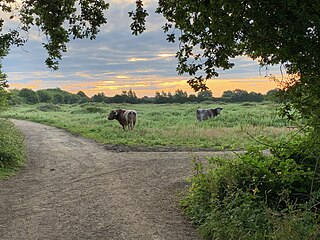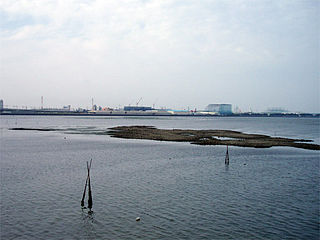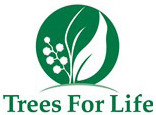
Southwest National Park is an Australian national park located in the south-west of Tasmania, bounded by the Franklin-Gordon Wild Rivers National Park to the north and the Hartz Mountains National Park to the east. It is a part of a chain of national parks and state reserves that make up the Tasmanian Wilderness World Heritage Area. Covering an area of 6,183 km2 (2,387 sq mi), it is Tasmania's largest national park.

The Chiltern-Mt Pilot National Park is a national park that is located in the Hume region of Victoria, Australia. The 21,650-hectare (53,500-acre) national park is situated approximately 275 kilometres (171 mi) northeast of Melbourne, and extends west from Beechworth across the Hume Freeway and the Albury-Melbourne railway line to the west of Chiltern.

Conservation in Australia is an issue of state and federal policy. Australia is one of the most biologically diverse countries in the world, with a large portion of species endemic to Australia. Preserving this wealth of biodiversity is important for future generations. 25% of Australia is managed for conservation.

Soil salinity and dryland salinity are two problems degrading the environment of Australia. Salinity is a concern in most states, but especially in the south-west of Western Australia.

The National Wildlife Federation (NWF) is the United States' largest private, nonprofit conservation education and advocacy organization, with over six million members and supporters, and 51 state and territorial affiliated organizations (including Puerto Rico and the Virgin Islands).

Reconciliation ecology is the branch of ecology which studies ways to encourage biodiversity in the human-dominated ecosystems of the anthropocene era. Michael Rosenzweig first articulated the concept in his book Win-Win Ecology, based on the theory that there is not enough area for all of earth's biodiversity to be saved within designated nature preserves. Therefore, humans should increase biodiversity in human-dominated landscapes. By managing for biodiversity in ways that do not decrease human utility of the system, it is a "win-win" situation for both human use and native biodiversity. The science is based in the ecological foundation of human land-use trends and species-area relationships. It has many benefits beyond protection of biodiversity, and there are numerous examples of it around the globe. Aspects of reconciliation ecology can already be found in management legislation, but there are challenges in both public acceptance and ecological success of reconciliation attempts.

The Wildlife Trust of India is an Indian nature conservation organisation.

Land clearing in Australia describes the removal of native vegetation and deforestation in Australia. Land clearing involves the removal of native vegetation and habitats, including the bulldozing of native bushlands, forests, savannah, woodlands and native grasslands and the draining of natural wetlands for replacement with agriculture, urban and other land uses.

Earthwatch Institute is an international environmental charity. It was founded in 1971 as Educational Expeditions International by Bob Citron and Clarence Truesdale. Earthwatch Institute supports Ph.D. researchers internationally and conducts over 100,000 hours of research annually. Using the Citizen Science methodology, Earthwatch's mission statement is "to engage people worldwide in scientific field research and education to promote the understanding and action necessary for a sustainable environment." As such, it is one of the global underwriters of scientific field research in archaeology, paleontology, marine life, biodiversity, ecosystems and wildlife. For over forty years, Earthwatch has raised funds to recruit individuals, students, teachers, and corporate fellows to participate in critical field research to understand nature's response to accelerating global change.

Rewilding is a form of ecological restoration aimed at increasing biodiversity and restoring natural processes. It differs from ecological restoration in that rewilding aspires to reduce human influence on ecosystems. It is also distinct from other forms of restoration in that, while it places emphasis on recovering geographically specific sets of ecological interactions and functions that would have maintained ecosystems prior to human influence, rewilding is open to novel or emerging ecosystems which encompass new species and new interactions.
The San Luis National Wildlife Refuge Complex is located in the northern San Joaquin Valley, within Merced County and Stanislaus County of California. The complex, with four federal National Wildlife Refuges, is managed by the U.S Fish & Wildlife Service.

The natural environment, commonly referred to simply as the environment, includes all living and non-living things occurring naturally on Earth.

Mulligans Flat Woodland Sanctuary is a protected area situated in the Gungahlin district in north Canberra in the Australian Capital Territory. It has several trails for walking, running and cycling. The sanctuary functions as a fieldwork site for researchers studying native ecology.
The San Joaquin River National Wildlife Refuge is a protected area of along the San Joaquin River in the northern San Joaquin Valley, California. It is within San Joaquin County and Stanislaus County.

Oyster reef restoration refers to the reparation and reconstruction of degraded oyster reefs. Environmental changes, modern fishing practices, over harvesting, water pollution, and other factors, have resulted in damage, disease, and ultimately, a large decline in global population and prevalence of oyster habitats. Aside from ecological importance, oyster farming is an important industry in many regions around the world. Both natural and artificial materials have been used in efforts to increase population and regenerate reefs.

Chicago Wilderness is a regional alliance of more than 250 different organizations that work together to improve the quality of life of the individuals and the many other species living in the Chicago (Illinois) area. Through the restoration and sustenation of the biological diversity that once encompassed the lands, their fundamental objective, to preserve the naturally occurring lands and waters in that region, is being made a reality. Through these activities, Chicago Wilderness played a major role in protecting and replenishing the naturally occurring ecosystems in the Chicago area as well as motivating people to become more aware and involved in the preservation of these lands and waters. Chicago Wilderness had continued to blossom through the funding and donations of many sources including private contributions, the member organizations, and state and federal grants.

Forest restoration is defined as “actions to re-instate ecological processes, which accelerate recovery of forest structure, ecological functioning and biodiversity levels towards those typical of climax forest” i.e. the end-stage of natural forest succession. Climax forests are relatively stable ecosystems that have developed the maximum biomass, structural complexity and species diversity that are possible within the limits imposed by climate and soil and without continued disturbance from humans. Climax forest is therefore the target ecosystem, which defines the ultimate aim of forest restoration. Since climate is a major factor that determines climax forest composition, global climate change may result in changing restoration aims. Additionally, the potential impacts of climate change on restoration goals must be taken into account, as changes in temperature and precipitation patterns may alter the composition and distribution of climax forests.
Texan by Nature, originally formed in 2011 as Taking Care of Texas, is a 501(c)(3) nonprofit focusing on uniting business and conservation. Texan by Nature is headquartered at Austin, Texas.

Trees For Life is a registered charity that protects and restores land in the bush, farms, and urban areas of South Australia. It runs many programs, the oldest involving volunteers growing seeds into small plants for planting by farmers and other landholders. It was formed in 1981 and now has 2000 volunteers.
Nigel Sharp is an Australian conservationist and biodiversity impact investor known for his work on the continent of Australia with threatened species conservation, new business models of regenerative agriculture and urbanism, nature-based tourism, and indigenous enterprise development.

















